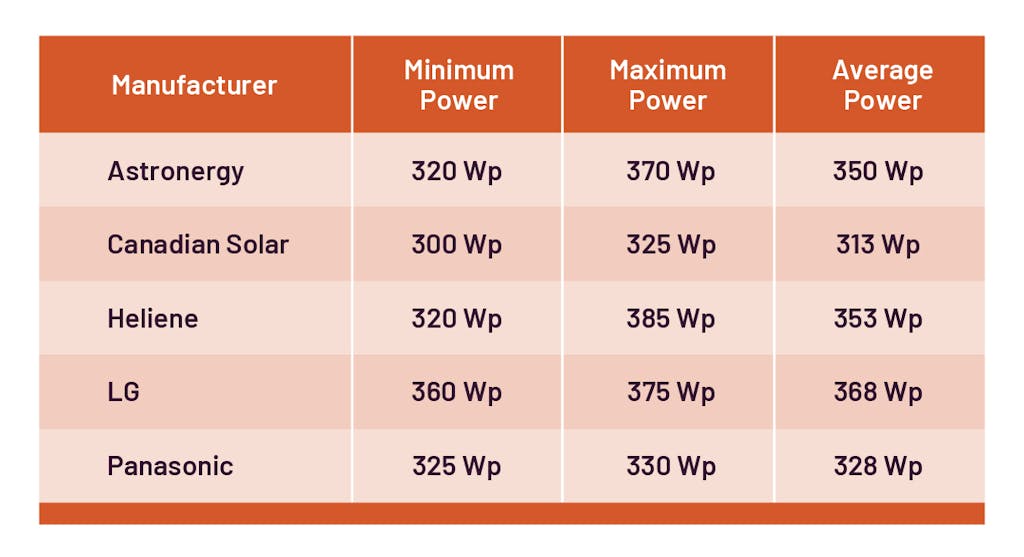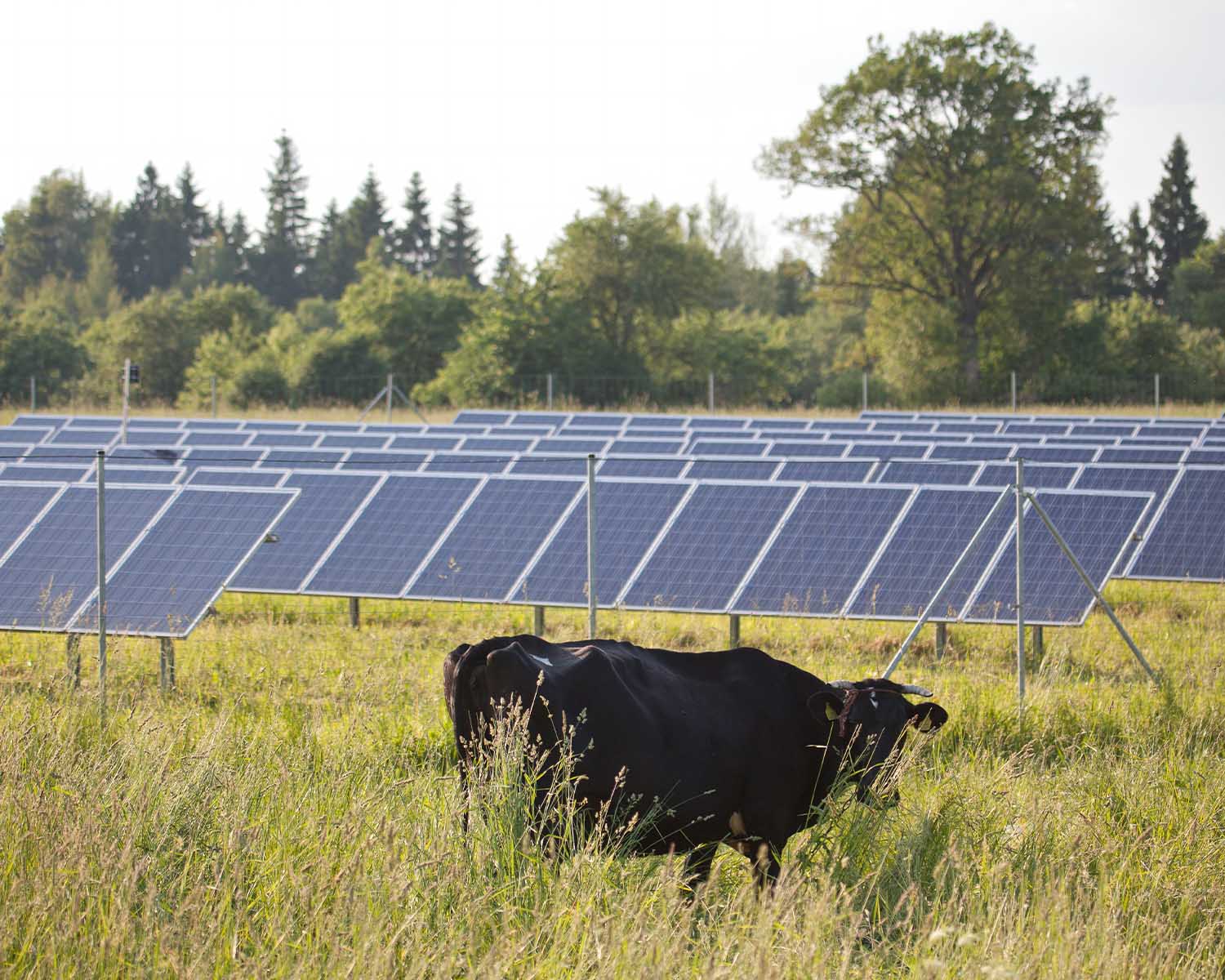If you’re like many other homeowners, you may wonder just how much power your solar panels produce.
This is a valid question. Installing solar takes time and energy and you want to reap the rewards and benefits of your hard work. You also want to be sure that you’re making the most out of your solar investment.
Here we’ll give you the information you need to calculate how much power your solar panels output. We’ll also tell you about factors that can affect your solar panel power output.

How Much Energy Does a Solar Panel Produce?
When you purchase solar panels, you have several options. Selecting the right solar panels for your project depends on how much energy you want to generate. All solar panels come with a power rating called the Standard Test Condition (STC) rating.
This number is listed on the back of the panel and tells you how much power that particular panel will generate under ideal conditions.
The ideal conditions of the testing environment include carefully controlled temperature and light. Exactly 1,000 watts per square meter of solar light is shined on the solar panel during testing.
The STC rating’s unit of measurement is the watt or kilowatt. Wattage is calculated by multiplying the solar panel output voltage times the amperes (amps). The solar panel output depends on multiple factors, the main ones being the solar panel’s size, efficiency, and cell type.
Solar panel size
The average-sized solar panels found on the market today consist of either 60 or 72 photovoltaic (PV) cells.
The difference between these two sizes is that the 72-cell panels have an additional row of solar cells and are therefore physically bigger. Depending on your space limitations and power needs, one size might be selected over the other or you may mix and match these sizes to better suit your project.
Typically, because the larger solar panels offer a greater surface area to absorb sunlight, they result in higher solar panel power output. On average, 60 PV cell solar panels have a power output of 270 watts to 300 watts and 72 PV cell panels garner between 350 watts and 400 watts of power in standard test conditions.

Efficiency
Solar panels come with efficiency ratings. These ratings measure the amount of sunlight each solar panel captures. Solar panels with a 20% efficiency can convert 20% of the sunlight that shines on the face of that panel. Higher efficiency panels cost more than those with lower efficiency ratings.
If space is an issue with your project, it may be worth paying the steeper price so that you can use fewer panels. In situations where you have unlimited space, it can be advantageous to go with a higher quantity of the less expensive, less efficient panels. You can reach the same power output, but with a smaller investment.
Solar panel cell type
The solar panel cell type also affects the power output of a solar panel. Current solar panels are made with silicon solar cells. The most common types are monocrystalline and polycrystalline solar cells which have similar solar panel power output.
Monocrystalline solar panels contain pure silicon and their construction process is complex. These are the most efficient, and most expensive, solar panels available.
Polycrystalline solar panels are made of multiple polycrystalline cells and processed to look like shattered glass. These panels are less efficient, but also less expensive.
Why Do You Need to Care About Solar Panel Output?
Solar panel output is an important metric used to evaluate your solar system. It answers the question of whether or not you’re getting what you paid for when you purchased the solar system. Solar panel pricing typically depends on the power output the panels are capable of producing in an ideal environment.
Can you expect to generate the Standard Test Condition power output all the time? The truth is no. In reality, the actual energy produced will vary depending on a number of factors.
The Standard Test Condition power output can be thought of as a goal. By measuring your solar panel output you can tell how well your system is working and how close to the target number are you getting.

What Can Impact the Efficiency of Your Solar Output?
While your solar panels come with an efficiency rating, there are multiple factors that impact the efficiency of your solar output. Finding ways to minimize efficiency loss enables you to generate more energy and reach your payback point faster. Here are some factors that can affect your solar output.
Shading
Shade blocks the sunlight your solar panels are meant to absorb and reduces your system’s energy production. Ideally, you’ll install your solar power panels in a location that receives full sunlight all year long.
If trees or other obstructions make it impossible to install your solar array in a full sun location, systems with power optimizers or micro-inverters have technology that limits the impact of shade on your system’s output.
Panel Orientation
The direction your panels face also influences your solar system’s efficiency. Face your panels towards the Equator to maximize your solar panel output. If you’re located in America like we are, you’ll set your panels up facing South.This can be challenging if you don’t have a South-facing roof. In that case, you may need to install a few more panels so that your East or West-facing roof achieves your desired output.
The tilt of your panels also impacts panel efficiency. Set the tilt of your panels equal to your latitude.
It’s fine to leave your panels at this angle year-round. But, if you really want to optimize your output and are hands-on, you can adjust the angle a few times a year.
Degradation rate
Each year solar panels lose approximately 0.5% to 1% of their rated output. This happens to all solar panels regardless of their type, but the exact percentage varies depending on the panel.
The manufacturer’s warranty lists the panel degradation rate so you know how efficient the panel will remain at the end of its warranty period. When deciding between two panels with the same efficiency rating, opt for the one with the lower degradation rate so you’ll get more power over its lifetime.
Cleaning
Debris on solar panels causes them to be less efficient. Depending on where you live, dust, snow or other debris can build up on the panels. Simply wiping them down once or twice a year with a cloth or soft brush will keep them clean and allow them to operate most efficiently.
Calculating Solar Panel Output
Now that you know what each solar panel can potentially output and all of the factors that affect that number, you might be interested to know how much power your solar panels are generating on a daily and monthly basis.
To calculate your solar panel output, use this simple formula:
Solar Panel Output = STC Rating (watts) x Peak Sun Hours in a Day x 75% (Daily watt hours)
The daily solar panel output is equal to the panel’s STC rating multiplied by the peak hours of sun your panel gets in a day, multiplied by 75%. Your total is the amount of watt hours that panel produces in a day. You can find your peak sun hours by using our sun hours map.
Why is 75% in the equation? That’s to adjust for the factors we discussed previously that affect the solar panel output.
Once you know the panel’s daily output, you can then multiply this number by the number of days in the month and you’ll have your monthly watt hours.
You may be more familiar with kilowatt hours. To convert watt hours to kilowatt hours (kWh) simply divide your watt hours by 1,000.
Solar Panel Power Output by Manufacturer
The table below shows you the estimated solar panel power output by manufacturer. There is a range for each manufacturer because they tend to make more than one kind of solar panel model. This table shows you the minimum, maximum, and average power output for solar panels made by each manufacturer.

Learn More
Now that you understand how to calculate your solar panel output and recognize factors that affect this output, you might want to continue your solar education.
Whether you’d like to learn more about solar power or are ready to shop our solar panel kits, we’re here for you. Our experienced team can provide you with the information and resources you need to make sure your solar panel output reaches its full potential.





